#allan kozinn
Text
“Individually, each of the Beatles was great to be with,” recalled John Kurlander, a fledgling EMI engineer at the time of the Abbey Road sessions. “They were funny, warm, friendly—really a delight. If there were two of them, that was also great. If there were three, it could be a little dicey, but generally, it was fine. But when all four were together, they closed ranks, and it would be horrible. It didn’t matter how any of them had treated you on his own; when all four of them were in the room, everyone else was treated as an outsider.”
— The McCartney Legacy, Volume 1: 1969 – 1973 by Allan Kozinn and Adrian Sinclair (2022)
#The Beatles#(This band in a nutshell)#Band Dynamics#The McCartney Legacy#2022#Allan Kozinn#Adrian Sinclair#John Lennon#Paul McCartney#George Harrison#Ringo Starr
328 notes
·
View notes
Text
The McCartney Legacy, Volume 1, 1969-73 - A Review
Cool cover, huh?
That cover is a harbinger of what is contained inside.
Let’s get straight to the point – this is one of the best studies of Paul McCartney and his solo music you are going to find. Epic and essential, full stop.
The McCartney Legacy by Allan Kozinn and Adrian Sinclair is the first installment of what will become a multi-volume set. As its subtitle suggests, Volume 1 captures…

View On WordPress
#Adrian Sinclair#Allan Kozinn#Beatles#Beatles Books#Linda McCartney#McCartney Biography#Music#Paul McCartney#The McCartney Legacy#Wings
10 notes
·
View notes
Text
Beatles, Things We Said Today #400 – Our 400th show: Now & Then, Red & Blue and the Beatles Universe in 2023 Download
To celebrate our 400th episode, Ken Michaels, Allan Kozinn and Darren Devivo welcome back two past co-hosts, Steve Marinucci and Al Sussman, for a look back at some of the show’s history and a discussion of social media, podcasts and other ways of exploring the Beatles legacy, and its effect on the world of Beatles scholarship, fandom and the Beatles popularity in 2023.
2 notes
·
View notes
Text
Exclusive: Steve Holley reveals Linda would drunk-shame Paul from horseback
I don't know how interested any of you are in the Fest for Beatles Fans, which I've attended twice now, but I thought everyone needed to hear this story.

I attended a panel with Adrian Sinclair, Steve Holley, Laurence Juber, and Allan Kozinn. The two on the ends wrote The McCartney Legacy. The other two were in Wings during Back to the Egg.
Recording "Arrow Through Me," which I've confirmed with the McCartney Project was done in Campbeltown, Scotland, they finished up a long day and went out to the pub. According to Steve Holley, they both drank everyone else under the table and around dawn, they emerged, staggering, to the street. Paul stopped and said, "d'you hear that?"
"What?"
"Do you hear a horse?"
Steve did, in fact, hear a horse.
"It's my wife," Paul said. "I'm in trouble."
Indeed, Linda rode up on a horse, stopped in front of them, and looked down. "Look at the state of you two," she said. "You disgust me." Steve said something about asking her if she'd let that man marry her daughter, which I didn't quite get, though she said, "Yes, but that's not the issue right now."
And Paul got up behind her and they rode away.
The existence of this story heavily implies this was not the only time Linda had to pick up Paul on a horse. We imagine that, upon discovering Paul wasn't yet home, she merely had to step outside, whistle, and her steed appeared, ready to shame Paul McCartney.
#fest for Beatles Fans#Steve Holley#paul mccartney#linda mccartney#arrow through me#back to the egg#Kris talks a lot
285 notes
·
View notes
Text
youtube
"Something" is a song by British rock band the Beatles from their eleventh studio album, Abbey Road (1969). It was written by George Harrison, the band's lead guitarist, about his wife Pattie Boyd and is widely considered one of the greatest love songs of all time.
Apple Records issued the single as the flip side of "Come Together" (not as a "B" side, but as an "alternate A side") insisted by John Lennon, who considered "Something" to be the best song on the album. The single reached #1 in the US and three other countries (and was Top Ten in dozen more). The release marked the first time that a Harrison composition had been afforded A-side treatment on a Beatles single. In a 1990 letter to Mark Lewisohn, Alan Klein rebutted a claim made in the book The Complete Beatles Recording Sessions that the single was intended as a money-making exercise: Klein said it was purely a mark of Lennon's regard for "Something" and "to point out George as a writer, and give him courage to go in and do his own LP. Which he did."
Together with his second contribution to Abbey Road, "Here Comes the Sun", it is widely viewed by music historians as having marked Harrison's ascendancy as a composer to the level of the Beatles' principal songwriters, Lennon and Paul McCartney.
Harrison began writing "Something" in late 1968 during a session for the Beatles' White Album. In his autobiography, I, Me, Mine, he recalls working on the melody on a piano at the same time as McCartney recorded overdubs in a neighboring room at Abbey Road Studios. But Harrison suspended work on the song, believing that with the tune having come to him so easily, it must have been a melody from another song (something McCartney also wrestled with on "Yesterday"). Only after months of checking with other artists (and borrowing the opening lyric from fellow songwriter James Taylor, another Apple Records client), Harrison was able to work out the middle eight and finish it. Finally sometime in 1969, Boyd recalled: "He told me, in a matter-of-fact way, that he had written it for me. I thought it was beautiful. He first played it to me in the kitchen."
The promotional film for "Something" was shot in late October 1969, not long after Lennon privately announced that he was leaving the band. By this time, the band members had grown apart. As a result, the film consisted of separate clips, edited together, featuring the Beatles walking around the grounds of their homes with their respective wives. Harrison's segment shows him and Boyd together in their garden at Kinfauns. The four segments were edited and compiled into a single film clip by Neil Aspinall. Allan Kozinn noted: "What Mr. Aspinall's idyllic film avoided showing was that the Beatles were at that point barely on speaking terms. In the film, no two Beatles are seen together."
"Something" received the Ivor Novello Award for the Best Song of 1969. By the late 1970s, it had been covered by over 150 artists, making it the second-most covered Beatles composition after "Yesterday". Shirley Bassey had a top-five hit with her 1970 recording, and Frank Sinatra regularly performed the song, calling it "the greatest love song of the past 50 years." In 2000, Mojo ranked "Something" at number 14 in the magazine's list of "The 100 Greatest Songs of All Time".
A year after Harrison's death, his good friends McCartney and Eric Clapton performed a loving rendition of the song at the Concert for George tribute at London's Royal Albert Hall. Pattie Boyd said she was "moved to tears" by the performance.
#music video#1960s#rock and roll#legends#Ringo Starr#Linda McCartney#Maureen Starr#icons#vintage#60s rock
46 notes
·
View notes
Text
The Evolving Story of Kim Bennett, Pt. 1: Before Lewisohn
0. Mark Lewisohn’s Star Witness
1. An Introduction and Primer
2. The Evolving Story of Kim Bennett, Pt. 1: Before Lewisohn >You Are Here<
3. The Classic™ Contract Story, and Why Lewisohn Distrusts It
4. The Evolving Story of Kim Bennett, Pt. 2: Tune In
5. Lewisohn’s Other Sources
6. Lewisohn’s Portrayal of Kim Bennett & George Martin
After two posts and as many months of build-up, it’s finally time to look at Kim Bennett’s presence in Beatles history before Mark Lewisohn’s Tune In. As a refresher, Kim Bennett was a music plugger involved in a brief chapter of the Beatles' story, who Lewisohn draws on as a crucial witness to ~debunk the myth~ of how the Beatles’ first landed their recording contract with Parlophone. I’ve previously shown an example of Kim Bennett’s presence in Beatledom here, in an issue of Beatles Book Monthly, just a few pages before the name of a young Mark Lewisohn. I’ve also discussed some of the ways Lewisohn slants a story when he’s set on overturning a classic narrative – you can find that here.
Section 1: Mark Lewisohn on Kim Bennett
Part of the appeal of Mark Lewisohn’s Beatles-signing scoop is Kim Bennett’s oft-stated absence from the Beatles narrative. Lewisohn found and memorialized a man who had been marginalized from the Beatles’ story, a hero integral to their success who was erased from history due to his inconvenience to the legacy of a certain acclaimed producer. Not only has Lewisohn turned a classic narrative upside down, he’s righted the wrong done to Kim Bennett by the powers that be--or so he would have us believe. The importance of Bennett’s testimony and his exclusivity to Tune In is a crucial element of Lewisohn’s myth-building around himself and his work. Let’s take a look at a few examples:
In a 2014 interview with Dierdre Kelly, Lewisohn calls his revised version of the Beatles’ recording contract “probably one of the biggest things in the book.” As for how he came to that version of events, Lewisohn says, “It all fell into place when I met a man called Kim Bennett…without whose incredibly tenacious efforts—and he was never named in any book—we would never have heard of the Beatles. He literally was the story’s hero and he tells us a very different story.” [Emphasis mine]
From Allan Kozinn’s 2013 interview with Lewisohn, we get the following exchange:

Kozinn describes Bennett as “someone who had never been interviewed,” and Lewisohn not only doesn’t correct him, he furthers that idea by saying Bennett “had been trying for years to get people to listen to his story…and nobody wanted to know.”
As a final example, we’ll return to the episode of Nothing Is Real (season 7, ep. 7) that I excerpted in my first post on Bennett.
A partial transcript [emphasis mine]:
“I approached him, and he was so happy that I got in touch with him because he knew the true story of how the Beatles came to be signed to EMI and he knew that it was his efforts that had made the difference, and without him, it wouldn’t have happened. The Beatles possibly may never have happened without Kim Bennett, and he’d been trying to tell people for years, and people didn’t want to know.”
“He was a very frustrated man because no one had ever paid him the attention that he felt was his due.”
“…and if I hadn’t of got to him when we did, we wouldn’t know him, and we would always have that bizarre gap of how they got signed by someone who never met them.”
Again and again, Lewisohn tells us that Kim Bennett had been trying desperately for years to gain recognition for his action, and everyone ignored him--everyone but Mark Lewisohn. This is decidedly untrue. He has been mentioned in multiple Beatles publications by major names in Beatles history, which you can find in Section 3. But first!
Section 2: Biographical & Background Info
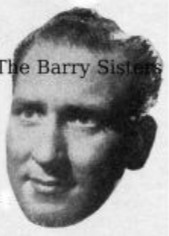

Here he is, the man of the hour, Kim Bennett - and I bet you thought that was the Barry Sisters! On the left, we see Kim Bennett's floating head from his days as a singer, and on the right, we see him fraternizing with Russ Conway circa 1967 - Bennett is in profile on the right. I've dug up some biographical information on the enigmatic Kim Bennett, and I wanted to share it here along with a little context about music publishing to make the accounts shared in the next section make mroe sense. If you're confident in your early-1960s music industry knowledge and know who Kim Bennett and Sid Colman are, scroll right along to Section 3.
I've cited Lewisohn a few times in this section when other sources weren't available. Every time I cite him, I put a quarter in the "Risky Citations" jar - once I've filled it a few hundred times, I'll take it to CoinStar and use the money to buy a copy of Fifty Years Adrift.
The Parlophone Contract Story is a story with many bit parts, most of whom won't appear until my next post--there will even be a figure! I'll assume you know the Beatles, Brian Epstein, and George Martin, the man who would become the Beatles' main producer. In the parlance of the times, George Martin was the A&R man (artistes and repertoire) of EMI's Parlophone label. As the A&R man at Parlophone, George M. has the head of the label, with duties including scouting artists, matching his stable of artists with songs, and overseeing the recording process.
Alongside record labels like Parlophone, Columbia, and HMV, EMI had other companies under its corporate umbrella. One of these companies was the music publisher, Ardmore & Beechwood (A&B).
Music publishers manage song copyrights; they make money by marketing and disseminating those songs. In the early 20th century, the big moneymaker for music publishers was sheet music sales. By the 1950s and 60s a sea change was in progress as record sales grew and eventually eclipsed the sale of sheet music. Just as the medium through which songs were sold changed, so did the way in which music publishers sold those songs: originally, song pluggers from publishing companies would pitch their songs to orchestras, brass bands, and dance halls, seeking out groups who performed live music, so that their audiences would go out and buy sheet music of the songs they’d heard (Southall & Perry 2006, p.ix-xii). With the rise of records, song pluggers would pitch their songs directly to A&R men; they would visit the A&R men in their office and sing the songs they had on offer, accompanying themselves on the piano while they did (Martin & Hornsby 1979, p.48). They could then market those records to sell their songs. If a song was recorded by multiple artists, as was often the case, the song publisher benefited regardless of which version of a song played. This set their interests slightly apart from record producers, who only benefited if their version of a song sold.
Let's illustrate with a Lennon-McCartney original: the music publisher for Lennon-McCartney's music, Northern Songs, would profit from both the Rolling Stones version of 'I Wanna Be Your Man' and the Beatles version, but the record companies would only benefit from the version they released - the Stones version meant money in Decca's pocket, while the Beatles version benefited EMI.
(I'm sure their are some additional business/contract complexities that come into play, but I believe the general principle is correct)
EMI Music Publishing would one day be a Big Fucking Deal, but when the Beatles joined in 1962, it didn't exist yet. Publishing was a minor interest for the company, and they had only a small publishing presence in the form of A&B, which opened in 1958 (Martland 1997, p.262). A&B was set up to handle the publishing interests of two American companies, Ardmore Music Corp. and Beechwood Music Corp., both of which were owned by Capitol Records (Cash Box 1958 Jul 26, p.34). Capitol Records had been purchased by EMI in 1955 (Southall 2009, p.25), and A&B was set up a few years later to handle their catalogue in the U.K., while also providing and option to publish through EMI for any interested songwriters. This was done at the behest of EMI Chairman Sir Joseph Lockwood (Southall 2006, p.9-10).
From its genesis, veteran music publisher Sid Colman (1905-65) served as general manager of Ardmore & Beechwood (Cash Box 1958 Jul 26, p.34). He would serve in this role until his untimely death in April 1965 (Cash Box 1965 Apr 24, p.47). You will encounter multiple spellings of his name, but Lewisohn assures us that Sid Colman (rather than Syd Coleman) is correct (2013, p.856). Kim Bennett served as his assistant and music plugger.
Born Thomas Whippey (1931-2004) (Lewisohn 2013), he became a Decca recording artist in 1954 under the name Kim Bennett. He recorded six singles, none of which charted. I haven’t found any of his work online, but for an idea of the type of music he released, here are other versions of two songs he put out: ‘Softly, Softly’ by Ruby Murray and ‘The Kentuckian Song’ by Eddy Arnold. He maintained a day job as an office worker until 1955, then briefly worked as a musician full time. He worked a season at Butlin’s (not the same location as Ringo), played some clubs, and toured with the Ambrose orchestra, but his career as a singer had petered out by late 1956. As Don Wicks puts it “[h]e was a victim of the growing rock and roll industry no longer interested in a soft pleasant vocal style.” (Wicks 1996 pt.1)
He resumed work at a toy warehouse, (Wicks 1996 pt.1) but later took a job in music publishing with B. Feldman & Co. Ltd. (Cash Box 1967 Jul 22 p.65). He began work with Ardmore & Beechwood no sooner than August 1958. He was still with Ardmore & Beechwood as of June 1965 (Cash Box 1965 Jun 5 p.55). By July 1967, he had moved to South Africa, where he ran a newly launched publishing company, Francis Day (S.A.) (Pty), which was established to manage copyrights of B. Feldman & Co. Ltd., Francis Day & Hunter, and Robbins (Cash Box 1967 Jul 22 p.65).
According to Lewisohn, Bennett spent his later years in Shropshire in “quite humble circumstances (Nothing Is Real, Season 7 Ep. 7, 29:30). He was interviewed by Lewisohn on July 27-28, 2003 (Lewisohn 2013 p.869). He died in 2004.
While biographical information on Bennett between 1967 and 2003 is slim (perhaps nonexistent), his role in the Beatles story received several mentions in print in those intervening decades.
Section 3: Kim Bennett in Beatles History
As I highlighted in my first post in this series, Kim Bennett was quoted in Beatles Book Monthly Issue 70, but that isn't his earliest appearance in the Beatles lore - he first appears in an earlier issue of BBM, issue 13, published in Augst 1964, p.22-3. He's mentioned by BBC DJ Ted King in relation to his work plugging 'Love Me Do'.
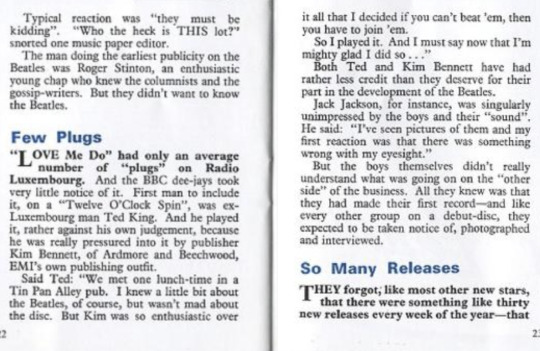
To summarize: Kim Bennett went to lunch with Ted King and pitched “Love Me Do” to him. King wasn’t fond of the record, but Bennett’s enthusiasm convinced King to play it on “Twelve O’Clock Spin.”
Our next Bennett sighting (and the first to use Bennett as a source) is the aforementioned BBM Issue 70, p.8, published May 1969.

This is part of a piece titled “When did you Switch On?” whose author is unattributed. Whoever they are spoke to Kim Bennett directly. Here’s what we can gather from this piece:
Kim Bennett was Sid Colman’s assistant
Colman “had quite a job to persuade George Martin to see the Beatles”
Bennett, presumably, was in the room when Colman “first heard the Beatles’ tapes”, since Bennett is able to relate what Sid Colman said on the matter
Colman decided to call Martin because he did not have a similar-sounding pop group, while the other EMI A&R men did
Bennett next crops up in several of Bill Harry's books, starting in 1982. Bill Harry is the founder of Mersey Beat and was an art school chum of John and Stu's; he's written a number of reference books about the Beatles, including The Beatles Encyclopedia, The John Lennon Encyclopedia, and The Book of Beatle Lists, among many others. Four of his books mention Bennett. The information in these books seems to be pulled from the two BBM articles highlighted above - with the possible exception of the last one. The books where Bennett is mentioned include:
The Beatles Who’s Who (1982): An encyclopedia of Beatle people. Bennett does not get his own entry, but he is mentioned in the entry on Sid Colman (p.84). Bennett is said to be Colman’s assistant, and his involvement in “Love Me Do” promotions is noted without detail.
The Ultimate Beatles Encyclopedia (1992): Bennett now gets his own entry (p.84-5). Again, this appears to draw from the Beatles Book articles. More detail is included here than in The Beatles Who’s Who. Bennett is mentioned again in Sid Colman’s entry (p.168). There’s a reference to Colman and Bennett liking the demos for “Love of the Loved” and “Hello Little Girl”, which is not mentioned in BBM above. However, these songs were referenced in relation to Sid Colman in The Beatles Who’s Who, so I think Bennett is just lumped in with Colman here.
Also in the Colman entry, Harry points out two conflicting accounts of the promotion of “Love Me Do.” George Martin wrote in his memoir that Ardmore & Beechwood did “virtually nothing” to promote the song, but Ted King, in BBM Issue 13, said it was Kim Bennett who got him to play the song on “Twelve O’Clock Spin.” This apparent contradiction will be discussed in detail when we deal with Tune In’s version of events, but for now, I’ll say this: it can be true that Kim Bennett did his best to promote 'Love Me Do' and acheived limited success while still falling short of the expectations of George Martin (and, crucially, Brian Epstein).
The Encyclopedia of Beatles People (1997): Bennett has a brief entry (p.45) and is mentioned in Sid Colman’s entry (p.92-93.) The Sid Colman entry includes this quote from Sir Joseph Lockwood about the Beatles’ publishing rights “I don’t blame Sid Coleman [sic], because he published the first two songs without a contract. He wasn’t getting any support from either the record producers or the solicitors.” This quote appears in Ray Coleman’s The Man Who Made The Beatles (1989), seemingly from an interview conducted by Coleman while researching that book.
The Ultimate Beatles Encyclopedia (Revised & Updated, 2001): The entry for Kim Bennett includes the entirety of the entry in the 1992 version with an additional two paragraphs (p.135-6). These paragraphs are emotionally charged and add information not available in the two articles from BBM. After detailing Bennett's involvement in 'Love Me Do' promo, Bill Harry writes,
“It’s ironic that the two people who were so enthusiastic about the Beatles and helped to get them with EMI in the first place were to have George Martin shut the door in their face by suggesting to Brian Epstein that he see Dick James about being their publisher. For one thing, it was Coleman [sic] who, after talking to Brian realized that the only A&R man at EMI who hadn’t rejected the Beatles was George Martin. Apparently, Coleman had a hard job persuading Martin to see Epstein. Even then, Martin wasn’t initially impressed by their sound. He only agreed to a test session at EMI’s No. 3 studio four weeks later, then another three months elapsed before the release of their first single. EMI and Martin weren’t even confident enough to give the Beatles a plug rating. Artists such as Cliff Richard received an ‘A’ plug on EMI’s Radio Luxembourg shows. The lowest was ‘B2’. The Beatles weren’t even given this low plug, EMI gave ‘Love Me Do’ a nil rating.
“So Bennett had a hard job pushing the record without EMI using their clout. As a result, Epstein refused Ardmore & Beechwood the future Beatles publishing. Had he done so, the Beatles might have retained the rights to their own songs, and Coleman might have received some acknowledgment for having placed the Beatles into his hands in the first place.”
It’s hard to say whether or not additional information from Kim Bennett made it into this article. Much of this could be pulled from other sources and presented through a negative lens stemming from Dick James’ involvement in the Northern Songs debacle. There are, however, two elements here that are consistent with Bennett’s later accounts that might suggest that he spoke with Bill Harry: (1) the phrasing that George Martin “shut the door” in the face of A&B, rather than Brian Epstein actively seeking out a different publisher and going to George for advice, and (2) the blame placed on George Martin for the Beatles low plug rating. Both new elements, and both inconsistent with certain other versions of events.
In Philip Norman's revised Shout! (2003), there is unambiguous evidence of Kim Bennett's participation.
In the original 1981 release, Sid Colman and A&B are mentioned, but not Bennett; in the revised edition, not only is Kim Bennett present, but the information surrounding him is clearly more than the familiar, regurgitated tale found in Beatles Book Monthly.
Norman doesn’t give citations, so I can’t say conclusively how he got this new information. There may be an interview with Kim Bennett published somewhere that I haven’t come across, though I’m inclined to believe either Norman or one of his research assistants spoke to Kim Bennett directly. The phrase “According to Bennett” appears a few times in Shout! (2003), which reads as if the information is coming directly from the horse’s mouth, so to speak.
Since the revised edition was published in the same year as Lewisohn’s interview with Kim Bennett, I considered that Lewisohn might have shared his information with Norman, and Norman may have rushed an edit. I looked for the exact publication date for the revised edition of Shout!—it was weirdly hard to find—and that put to bed any ideas of Norman cribbing off of Lewisohn’s notes: Pan Macmillan Australia gives the release date as January 9, 2003, several months before Lewisohn interviewed Bennett.
The Contract Story, as presented in the revised Shout! starts in the usual way: Brian gets an acetate made from the Beatles’ demo tape, the technician likes it and puts Brian in touch with Sid Colman, who works for A&B upstairs. Colman is interested in publishing the original Lennon-McCartney numbers. Then Kim Bennett enters the picture (Norman 2003, p.164-5):


Bennett likes the disc, too, and suggests they record the Beatles independently in the for-hire studio below their Oxford Street office. Colman takes Bennett’s idea to Len Wood, managing director at EMI, but it goes against protocol, and Wood won’t allow it. Only then does Colman put Brian in touch with George Martin. Colman and Brian have a “gentlemen’s agreement” that A&B will get the Lennon-McCartney publishing rights if they get a contract with George M.
It’s a short passage, but there are already a few problems here. First, the timeline doesn’t make sense. Most early accounts have Brian’s meeting with George M. occurring the day after Sid Colman hears the tapes (see A Cellarful of Noise, The Beatles (1968), and All You Need Is Ears). The largest gap is given by Lewisohn’s Chronicle (p.53-55), in which Epstein is said to have met Colman “around February 8” (a Thursday), with the Epstein-Martin meeting occurring on Tuesday, February 13. The Epstein-Martin meeting date seems to be pulled from George Martin’s date book (he has a meeting with a “Bernard Epstein” on that date), but I’m unsure what brought Lewisohn to the February 8 conclusion. Based on other information in the Chronicle, my best guess is either a meeting between Colman and Martin on February 9th, or a letter sent to Decca by Epstein on February 10th stating he had secured a recording contract. Whether or not he had met with Colman, Epstein certainly hadn’t secured a recording contract on that date – it was purely bluster, a kiss-off to Decca.
Regardless, even if Epstein met Colman on February 8th rather than February 12th, that’s a narrow window of time for Bennett’s story to occur. Rather than trying to place the group with an A&R man at EMI, Colman does nothing until his assistant suggests they record the Beatles themselves. This is unorthodox. A large part of the job of music publishers, as I’ve said above, is to pitch songs to A&R men to get them recorded. In this case, they’d be pitching a group along with the songs, but it seems strange that they wouldn’t try to work their contacts at all before making the jump to DIY. Still, let’s assume that happens. Colman takes the idea to Len Wood. Len Wood’s office at the time was probably at EMI House in Manchester Square, which isn’t far from A&B’s Oxford Street location, so assuming Len Wood had an open schedule, and Colman felt a high enough degree of urgency to immediately take Bennett’s idea to the managing director, I suppose it’s possible that Colman took Bennett’s idea to Wood, was immediately shut down, and then called Epstein back in to set up a meeting with George Martin if we assume Epstein’s first meeting with Colman happened on the 8th rather than the 11th. Still, it seems odd to me that these events wouldn’t turn up in Epstein’s account – getting shut down by the managing director of EMI Records is sort of a big deal, and would add to the drama of the everyone-rejected-them-but-George-Martin-story.
The other big issue here is that this version of events contradicts Bennett’s account from 1969. Rather than simply overhearing Colman’s conversation with Epstein and subsequent persuasion of George Martin, Bennett now has a more active, central role. He’s not driving the story, but he now gives a version of events in which he’s one of the Beatles’ earliest champions. I don’t think it’s unfair to consider that Bennett’s increased involvement in the story might indicate an interest in being more than a footnote in Beatles’ history.
Bennett is mentioned again during the promotions of ‘Love Me Do’ (p.182-3):


Bennett secures some airtime on Two-Way Family Favourites by “repeatedly nagging a radio producer friend.” This is not the same radio show mentioned in Beatles Book Monthly Issue 13 (above), but it’s in keeping with Bennett’s role as a plugger—and that’s where Bennett’s involvement ends in Shout! (2003). There’s one more tantalizing mention of Brian’s “gentlemen’s agreement” with Colman, which he breaks due to his dissatisfaction with A&B, turning to George Martin for publishing advice.
There you have it: Kim Bennett’s evolving story pre-Tune In. It starts as a bit of extra detail that fits inside the greater framework of the Beatles’ Contract Saga, and, after thirty years, morphs into something that contradicts Bennett’s earlier version and the many other accounts of the same events. Things will get even stickier once we get to Tune In. But first...
Section 4: Why Does It Matter?
I can think of three explanations for why Lewisohn pitched Bennett as an unheard witness when he had, in fact, gone on the record before, and none of these explanations helps the credibility of the story.
Explanation 1: Neither Lewisohn nor Bennett knew about Bennett’s previous statements on the matter. This would be extremely damning for Bennett’s reliability, as it would mean he had forgotten both his 1960s statement to Beatles Book Monthly (plausible) as well as the interview that led to the information included in Shout! (concerning). This scenario also requires Lewisohn to be unaware of the above Bennett appearances, which doesn’t reflect well on his abilities as a researcher. If you find someone who you think has never been on record, you might want to at least look him up in the glossary of books by major Beatle authors.
Explanation 2: Bennett knew; Lewisohn didn’t. Perhaps Kim Bennett either neglected to inform Lewisohn of his past interviews, or outright lied to him on the matter. Lewisohn says that Bennett is “known for a dogged persistency” (Lewisohn 2013, p.571), has said that Bennett “just picks something up and he will not let it go,” (Let It Roll 2020, ~25:50), that he is “very insistent about things” and by the time Lewisohn interviewed him, “was a very frustrated man because no one had ever paid him the attention that he felt was his due.” (Nothing Is Real S7Ep7) Could this tenacity and feeling of entitlement to a part of the Beatles’ legacy have led Bennett to present himself as a bigger scoop than he really was? Might he have sold Lewisohn a tale of exclusivity and, perhaps, a version of the Contract Story more salacious and headline-grabbing than the truth?
Again, this explanation also hinges on the idea that Lewisohn was in the dark about Bennett’s prior interview(s), which is a huge oversight, but not as damning as explanation 3.
Explanation 3: Lewisohn knew and lied. Whether Bennett told Lewisohn outright that he had been interviewed in the past or if Lewisohn came upon that information in his research, Lewisohn chose to portray his interview with Bennett as exclusive. Perhaps this was purely to make his “scoop” seem juicier. Perhaps he was reluctant to give Philip Norman credit for finding Bennett first – there seems to be no love lost between Lewisohn and his former employer. Or perhaps Lewisohn knew that Bennett’s prior accounts made the story told in Tune In less credible. The early anecdote related in BBM already conflicted with the revised version in Shout! – if Bennett’s account, as related in Tune In, presented further inconsistencies, it would undermine Lewisohn’s major finding.
I’ll close with a segment from one of the better Lewisohn interviews I’ve heard. It’s from Ken Michaels’ radio show ‘Every Little Thing’, conducted in ~2013, and it’s one of the rare instances where an interviewer gives Lewisohn any pushback or asks follow-up questions regarding some of his more explosive claims. It’s an uncomfortable listen – Ken Michaels even appeared in the comments of this YouTube channel to counter claims that he has beef with Lewisohn– but satisfying to hear some meaningful questions when so many people are content to simply deify Lewisohn. Here's the relevant exchange:
youtube
KM: Aren’t there also problems with certain people that you’ve interviewed that have played some part in Beatle history that want to really elevate their status?
ML: Oh yeah, oh yeah, and it’s up to authors to ensure that they don’t get what they want. And there are unfortunately too many authors who just very happily take the stuff they’re given without challenging it. You’ve got to challenge all these things. And unless something completely fits into the framework of the story, you can’t use it.
Next time, on Days of Our Lies: the Classic Version of the Contract Story, and why Mark Lewisohn is so intent on debunking it. After that, we’ll finally look at the Contract Story as portrayed in Tune In.
Sources:
Cockcroft S, Carty J. 2023 Feb 14 [conducted 2023 Jan]. Nothing Is Real – Season 7 Episode 7 – Mark Lewisohn Returns [podcast, season 7, episode 7]. Nothing Is Real. 1:17:15. Available from: https://open.spotify.com/episode/5mtbNIreAY0Car6VASuZGV?si=b1e322e001a347e3
Coleman R. 1989. The Man Who Made the Beatles: An Intimate Biography of Brian Epstein. New York (NY): McGraw-Hill Publishing Company. 400p. Accessed online 2024 Mar 19. Available from: https://archive.org/details/manwhomadebeatle00cole/mode/2up
Kelly D. 2014 Jul 30. Setting the Record Straight: Interview with Beatles biographer Mark Lewisohn. Critics at Large. Accessed 2024 Mar 4. Available online: https://www.criticsatlarge.ca/2014/07/setting-record-straight-interview-with.html
Kozinn A. 2013 Dec 27. Tune In, and Turn On the Reading Light. ArtsBeat: New York Times Blog [accessed 2024 Feb 6]. Available from: https://archive.nytimes.com/artsbeat.blogs.nytimes.com/2013/12/27/tune-in-and-turn-on-the-reading-light/?_r=0
Lewisohn M. 1992. The Complete Beatles Chronicle. New York(NY): Barnes & Noble Books. 365p. Accessed online 2024 Mar 14. Available from: https://archive.org/details/completebeatlesc0000lewi/mode/2up
Lewisohn M. 2013. 1st U.S. Edition. The Beatles: All These Years Vol. 1: Tune In. New York (NY): Crown Archetype. 932p.
Lichtman I [editor]. 1965 Apr 24. Great Britain. Cash Box XXVI(40); International Section p.45. Accessed online 2024 Mar 18. Available from: https://archive.org/details/cashbox26unse_31/page/44/mode/2up
Lichtman I [editor]. 1965 Jun 5. Great Britain. Cash Box Vol.XXVI(46); International Section p.55. Accessed online 2024 Mar 13. Available from: https://archive.org/details/cashbox26unse_37/mode/2up
Lichtman I [editor]. 1965 Jul 24. Great Britain. Cash Box Vol. XXVI(53); International Section p.53. Accessed online 2024 Mar 13. Available from: https://archive.org/details/cashbox27unse/mode/2up
Lichtman I [editor]. 1967 Jul 22. Overlooking South Africa. Cash Box Vol.XXVIII(52); International Section p.65. Accessed online 2024 Mar 13. Available from: https://archive.org/details/cashbox28unse_50/mode/2up
Martin G, Hornsby J. 1979. All You Need is Ears. New York (NY): St. Martin’s Griffin. 293p.
Martland P. 1997. Since Records Began: EMI: The first 100 years. London: B.T. Batsford Ltd. 359p. Accessed online 2024 Mar 17. Available from: https://archive.org/details/sincerecordsbega0000mart/mode/2up
Michaels K. 2013. Mark Lewisohn interview [radio broadcast episode]. The Beatles – Every Little Thing. Originally aired on XM Radio. 1:53:18. Available from: https://www.youtube.com/watch?v=CjAUtngSoKc
Parnes S [editor]. 1958 Jul 26. Ardmore & Beechwood Open London Office. Cash Box Vol. XIX(45); p.34. Accessed online 2024 Mar 18. Available from: https://archive.org/details/cashbox19unse_43/page/34/mode/2up
Southall B, Perry R. 2006. Northern Songs: The True Story of The Beatles Song Publishing Empire. London: Omnibus Press. 218p. Accessed online 2024 Mar 13. Available from: https://archive.org/details/northernsongstru0000sout/mode/2up
*Wicks D. 1998. Updated 2012. The Ballad Years: From the Bombs to the Beatles: a Directory and Discography of British Popular Music-makers from 1945-1960. Accessed online 2024 Mar. Available from: https://archive.org/details/theballadyears/Book%20Contents/
Wilcox N. 2020 Apr 27. How The Beatles Got Signed [podcast, season 7]. Let It Roll. 57:21. Available from: https://dcs.megaphone.fm/PAN2878353172.mp3?key=5204cb23c38410bae94e208461239e2d&request_event_id=e800ecea-9c5e-40f2-90e3-dad820306501
Images from The Ballad Years and Cash Box 1967 Jul 22
*The Ballad Years by Don Wicks was originally published circa 1998 (by a company called In Tune International, of all things!) There is some great contextual info included at the Internet Archive link; to condense it here, after the original print run of the book, Don Wick continued to update the book, primarily to reflect the death of artists. He distributed these via Microsoft Word Document, and the 2012 version of these documents was uploaded to the Internet Archive. I believe that is the reason for “The Barry Sisters” being plastered across Kim Bennett’s face – the pages including artists’ pictures have very wonky formatting.
#mark lewisohn#the beatles#tune in#kim bennett#sid colman#ardmore & beechwood#it's TOO LONG but what can ya do#bless you if you read this whole thing
36 notes
·
View notes
Text
The AKOM Holiday Shopping Guide!
Here are some items we enjoyed this year, great choices for yourself or that Special Beatle Person in your life.
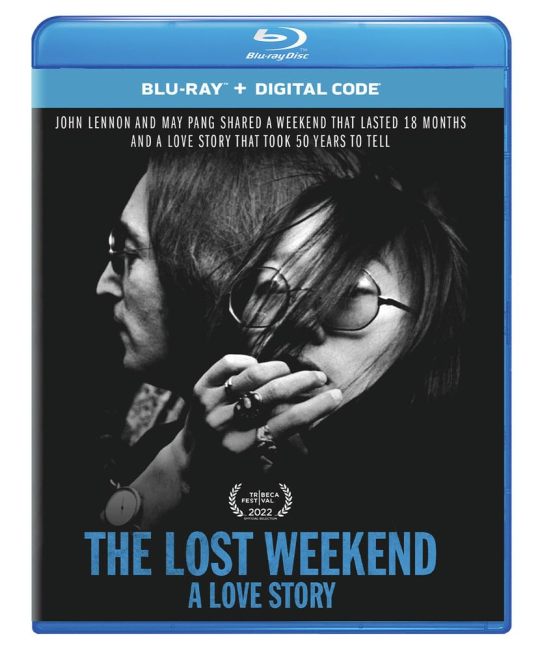
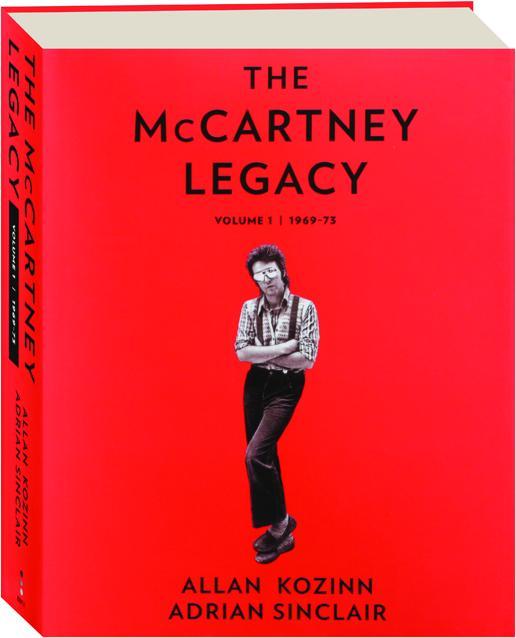
The Lost Weekend A Love Story (DVD, Blu-Ray, Streaming) 🥤
The McCartney Legacy by Allan Kozinn and Adrian Sinclair (Hardback and audio book!) 🐏

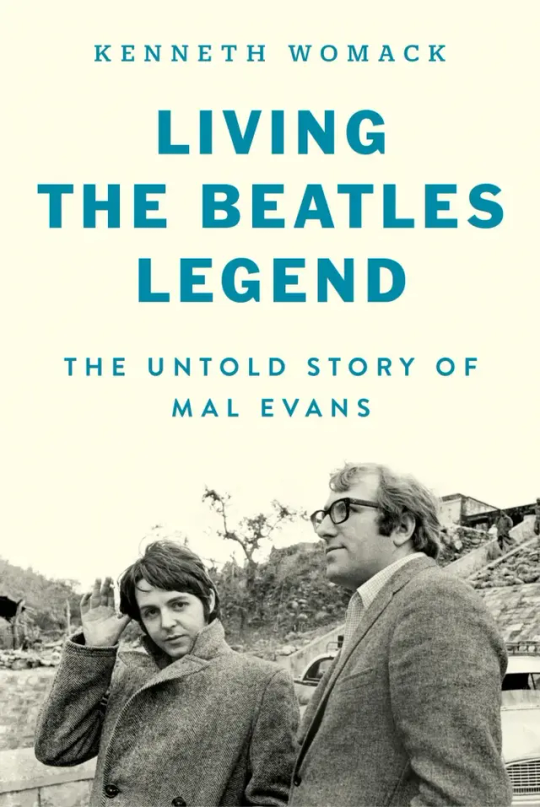
The Fifth Beatle (10th Anniversary edition) by Vivek Tiwary 🍏
Living the Beatles Legend: The Untold Story of Mal Evans by Kenneth Womack ⏰
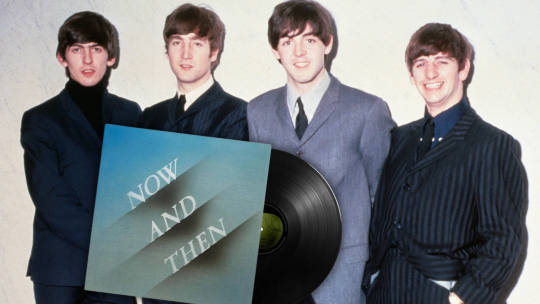
Now and Then, new Beatles single!! 📀

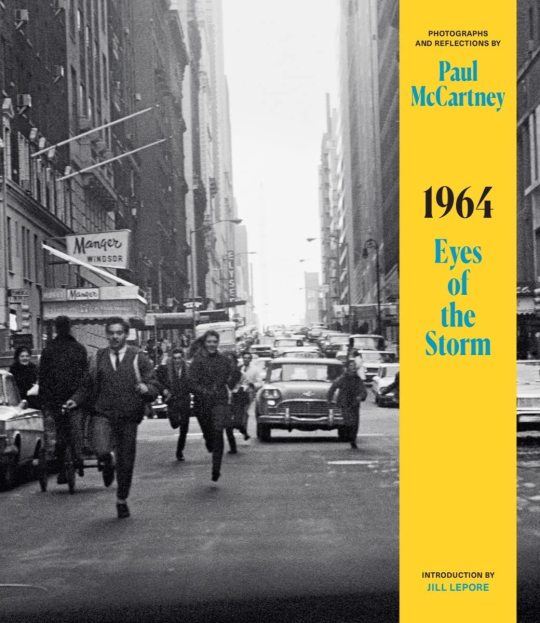
The Lyrics: 1956 to Present by Paul McCartney and Paul Muldoon (now in Paperback) 🎁
Eyes of the Storm by Paul McCartney 📸
Related AKOM podcasts:
Reclaimed Weekend AKOM Talks w/ May Pang
Frankensongs! AKOM Talks w/ Adrian Sinclair and Allan Kozinn
The Fifth Beatle AKOM Talks w/ Vivek Tiwary
The Mal Evans Story AKOM Talks w/ Ken Womack
Eleanor Rigby: (The Lyrics podcast)
Now and Then Reactions (IamtheEggpod)
#AKOM#recs#we aren't getting kickbacks#LOL#just thought we'd share our recs#another kind of mind#beatles
39 notes
·
View notes
Photo
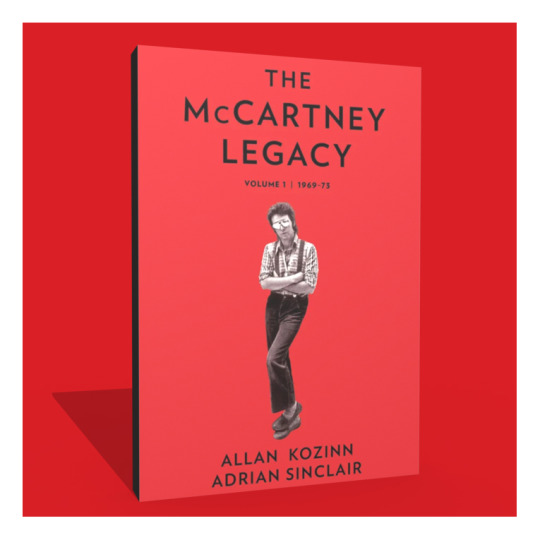
The McCartney Legacy Volume 1: 1969-73 is due out this year from Allan Kozinn and Adrian Sinclair. The authors are likening this to the job Mark Lewisohn is doing for The Beatles on his “Tune In” trilogy project. The project has evolved somewhat since it was conceived 8+ years ago, and it will now be a fully fledged biography of Paul’s life, and hundreds of people have been interviewed for the project (including many people who have never spoken about this period before). The authors assure us that there will be plenty of surprises for even the most well-read Macca fan.
21 notes
·
View notes
Photo


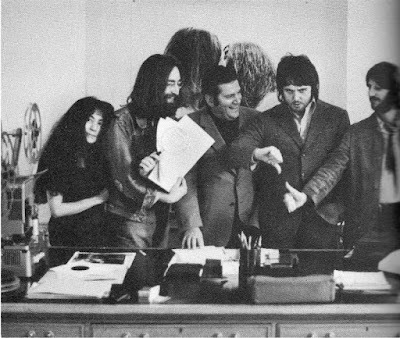

The Beatles and Allen Klein at a “signing ceremony” for a contract to make Klein the group’s manager, Sept. 20, 1969. McCartney attended as a courtesy, never intending to sign the contract and giving it a thumbs-down and pretending to use a magnifying glass in the bottom two photos.
The Beatles’ relationship with Allen Klein began Jan. 28, 1969, at a meeting with Lennon and Ono at the Dorchester Hotel. Klein later met with Ringo Starr and George Harrison, then a meeting with all four Beatles was arranged. McCartney refused to allow Klein to represent him and a major disagreement became a major cause of friction among the Beatles.
Allan Kozinn, who covered the Beatles for many years for The New York Times and author of The Beatles: From the Cavern to the Rooftop (Phaidon), said Lennon’s change of heart about Klein was quite an about-face. “John Lennon’s thinking about Allen Klein evolved fairly quickly between 1969, when he was the strongest advocate for Klein to be the Beatles manager, and 1973, when their business association was dissolved by this contract. It can’t have helped that George Harrison had already experienced problems to do with Klein’s handling of the proceeds for the Concert for Bangladesh, and that both George and Ringo wanted to extricate themselves from Klein’s management. Eventually Lennon said in a television interview that he had come to realize that Paul “might have been right” in his objections to Klein.
1 note
·
View note
Video
youtube
PLASTIC EP INTERVIEWS ALLAN KOZINN - AUTHOR-THE MCCARTNEY LEGACY, VOL 1...
0 notes
Text
Obvious as the [McCartney] album title may seem, Paul did not settle on it immediately. Toying, at first, with calling it “I’m the One It Hit the Most”, a reference to the still unannounced Beatles split, Paul settled on McCartney after learning that a report he had read in the music press was either incorrect or misconstrued. “I’d seen something that made me think, ‘Oh, John’s got a new record out, and it’s called Lennon,” he remembered. “I thought, ‘Oh wow! That’s great! Oh boy, I missed that boat.’ And it turned out not to be so. So, I thought, that’s a great idea, though, just call it your surname. So, I just made my first record McCartney.”
— The McCartney Legacy, Volume 1: 1969 – 1973 by Allan Kozinn and Adrian Sinclair (2022)
Lennon’s influence ♡
#Paul McCartney#John Lennon#The Beatles#2022#The McCartney Legacy#Allan Kozinn#Adrian Sinclair#I’m the One It Hit the Most
128 notes
·
View notes
Text
Antonio Velardo shares: David Del Tredici, Who Set ‘Alice’ to Music, Dies at 86 by Allan Kozinn
By Allan Kozinn
A Pulitzer Prize-winning composer who liked to redefine himself, he was originally known as an experimentalist but was later identified with a lush style that came to be called the New Romanticism.
Published: November 18, 2023 at 06:53PM
from NYT Arts https://ift.tt/vso0cTK
via IFTTT

View On WordPress
0 notes
Text
A Beatle Book Bonanza in 2023
We appear to be in something of an avalanche of Beatle books at the moment with lots of titles either out now, about to be released, or in the longer-term pipeline.
A couple of Paul McCartney books available right now are The McCartney Legacy Volume 1 1969-73 (see our review of this terrific book here), and another new one called Paul McCartney: Music Is Ideas – The Stories Behind the Songs…

View On WordPress
#1964: Eyes of the Storm#Adrian Sinclair#Allan Kozinn#Beatle podcasts#Beatles#Beatles Books#Bruce Spizer#Charts#Kenneth Womack#Living The Beatles Legend#Luca Perasi#Mal Evans#Paul McCartney
5 notes
·
View notes
Text
Beatles, Things We Said Today #395 Download
In episode 395 of Things We Said Today, Ken Michaels, Allan Kozinn and Darren Devivo choose their favorite and least favorite tracks from each of the Beatles British albums. It was harder than we expected, particularly selecting “least favorite” tracks, since let’s face it, the Beatles were the zenith of Western Civ and there are no actual bad tracks. (Hey…I heard that. No. There aren’t.)
Facebook YouTube
2 notes
·
View notes
Text
Chicago Fest for Beatles Fans 2023
I've always loved connecting with people who share my passions. For me, cons aren't about meeting celebrities or room parties, though those are both fine. For me, it's about meeting people whose eyes don't glaze over after thirty seconds of your special interest. So when I began my deep dive into Beatlemania, I wanted to find people who really wanted to chat. (Some of you have witnessed these efforts here, to varying degrees of success.) So I googled "Beatles conventions" and, on a whim, bought a ticket to the Fest for Beatles Fans in Chicago, partly because I had someone to stay with (over an hour away, but still) and didn't need to shell out for a room.
If my goal was to engineer a feeling like, say, my best one on one convos here, or the Meta the Beatles discord, or old school livejournal, or the K/S cons, it was only marginally successful. Still, I think it was a positive experience and I am considering attempting to afford the next one in February at the utterly stunning remodeled TWA hotel.
The Fest, which used to be called BeatleFest until Apple Corps intervened in 1997, has been ongoing since 1974 when founder Mark Lapidos asked John Lennon if he was cool with the idea of a Beatles convention. You can see various guests over the years here, so clearly it's a known quantity in Beatledom. Many people there this weekend have been attending since the beginning, and it's an annual (or bi-annual) tradition.
It differs from other fan cons I've been to in that the focus is largely on music itself. This is natural, but what I mean is, there is constantly at least one musical act playing Beatles music in some form. On the main stage and breakout rooms you also have guests: Pattie Boyd, Gregg Bissonette (Ringo's current drummer), Billy J Kramer, Terry Sylvester (the Hollies), Joey Molland (Badfinger), Jay Bergen (John's lawyer), Allan Kozinn (The McCartney Legacy), Bruce Spizer (various books about the recordings), Kenneth Womack (upcoming Mal Evans book!), Susan Ryan (long time Fest fixture and historian), Skylar Moody (Beatles TikTok), Jude Kessler (The John Lennon series), Sara Schmidt (Meet the Beatles for Real), Steve Matteo (Act Naturally: the Beatles on Film). There are dealers with vintage and current merch and memorabilia, a "museum" room with historic merch, old clippings, an "ashram" where you can attend various meditation and yoga sessions, a karaoke room, costume and talent contests, even a Beatles Rock Band setup I failed to attend despite my yearning to one day play it.
Some of the panels were pretty sparsely attended, and there was a strong feeling that a lot of people go to listen to the bands and stay up all night. But what that meant for those of us who were there to talk and make connections was, I got to talk and make a ton of connections. I met Sara Schmidt and her mother and they took me under their wing and introduced me to anyone who was anyone. I had a lovely chat with Ken Womack. Wally Podrazik insisted on taking a photo of my Nerk Twins shirt and demanded I email him. I spoke to Allan Kozinn about how a John boy comes to write the most comprehensive Paul biography ever. I met a lady named Tina who is going to hook me up with info about early slash and RPF fic (because I've heard several of you youngin's declare it's a relatively new phenomenon and I know it isn't!). I danced to a great cover band while looking like Twiggy. I had a lot of comments about my Stamp Out the Beatles shirt. I spoke to Steve Matteo about his book about the Beatles on film, and shared my own film work in which he took an avid interest.
All in all, it never got as in depth as you can with good fandom friends in a quiet setting. I've also heard that attendance and quality have gone down in recent years, and changes have been implemented due to stupid copyright shit (like, no being able to show any of the licensed films or cartoons? Which is a huge bummer.). But I do feel that I made connections and furthermore, felt embraced and included and warmly welcomed. No one questioned the fact I got here via "Get Back," no one challenged me on being new, no one made any attempt to gatekeep or Beatle bro at me. Only ONE person even asked who my favorite Beatle was. They all seemed genuinely delighted to have a new weirdo to share their passion with.
I haven't decided if I'm attending again, but I do already have plans in the works to suggest a few panels more in line with the type of con activity I like to see. Because even if it's not exactly the interactions I've been seeking, there's no substitute for face to face discussion and squee.
And now, my photos!
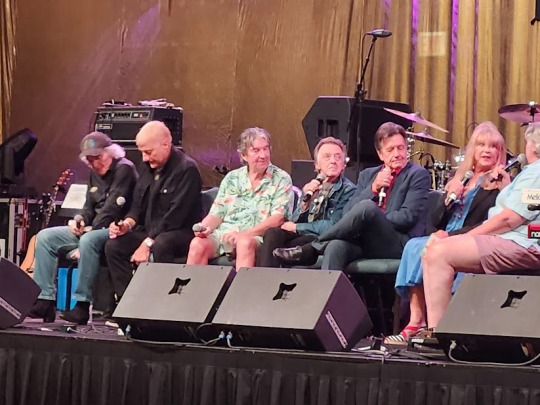
Jay Bergen, Gregg Bissonette, Terry Sylvester, Joey Molland, Billy J Kramer, Pattie Boyd, and moderator Terri Hemmert.

So many shirts!
My little outfits, missing my prized Stamp Out the Beatles sweatshirt:
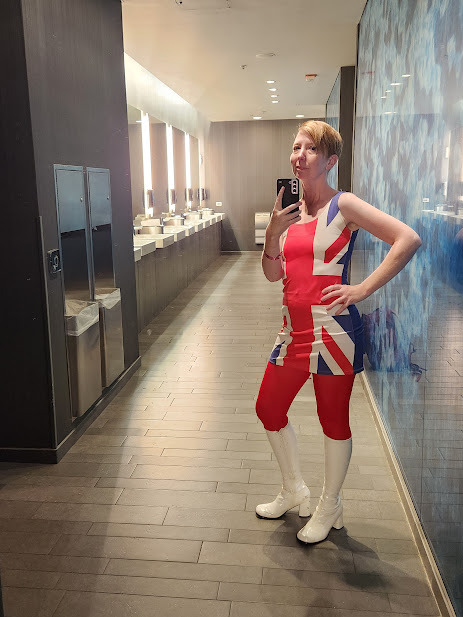


Weirdass vintage Beatles merch:

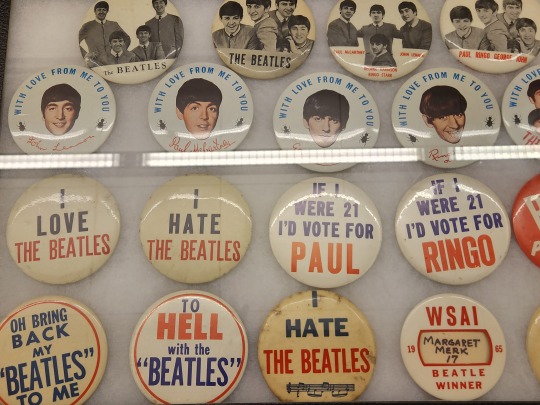


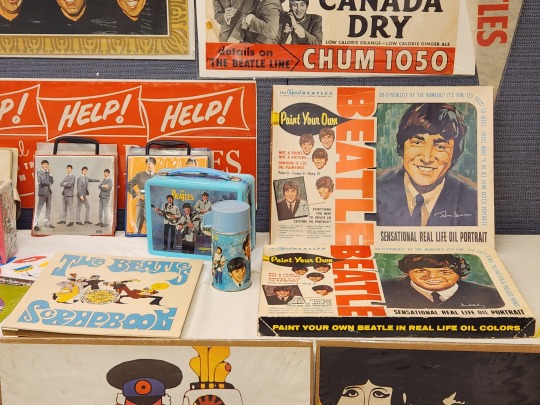
And finally, what I spent too much money on because everyone I talked to had written a book, GDI. Plus, 1974 era buttons because I like old stuff and they were $10:

14 notes
·
View notes
Photo
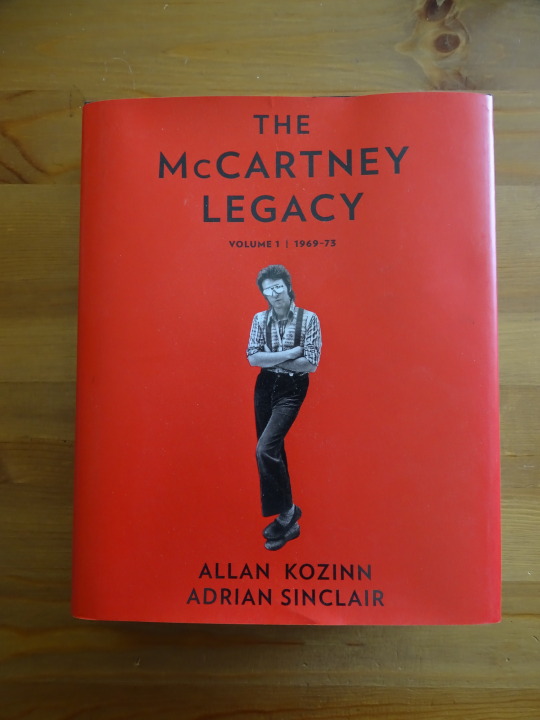
The McCartney Legacy Volume 1: 1969-1973 (2022) Allan Kozinn and Adrian Sinclair (720 pages)
Oh boy, that was a whole lotta Macca. I hope those authors have the next volume ready in about 25 years.
0 notes